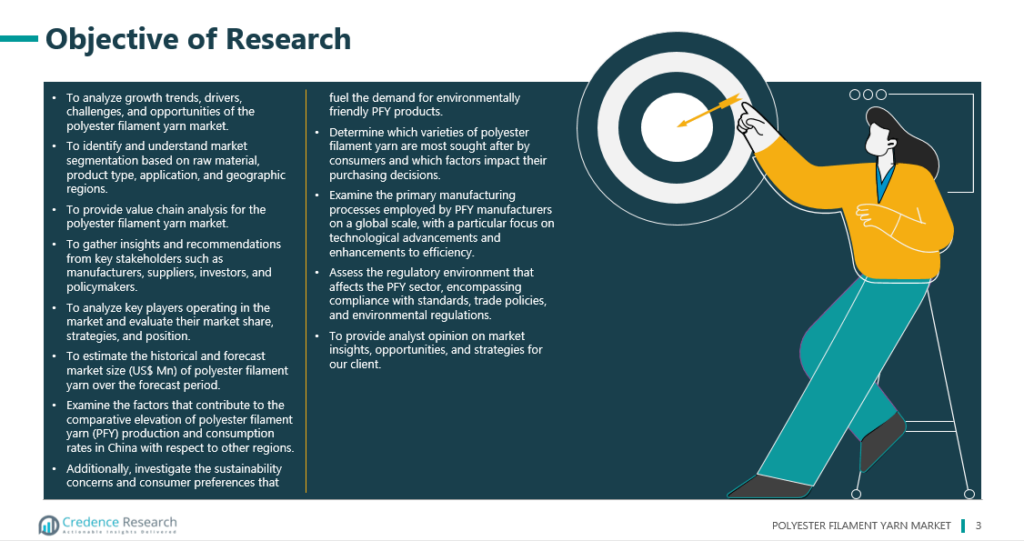




How the Market was Approached?
Polyester Filament Yarn Applications in Various Industries:
Polyester filament yarn (PFY) is an indispensable element utilized in a wide range of industries, which contributes to its increased market demand. PFY is widely utilized in the apparel industry for the manufacturing of garments on account of its remarkable longevity, resistance to wrinkles, and ability to retain its color, all of which accommodate the ever-changing fashion landscape. PFY finds application in industrial settings where it is utilized in the production of technical textiles, including geotextiles and conveyor belts, due to its robustness and abrasion resistance. Additionally, PFY is utilized in the manufacturing process of bedding, draperies, and upholstery fabrics for household textiles, where it provides durability and convenient maintenance.
Furthermore, PFY exhibits remarkable adaptability in various industries, including packaging materials and automotive textiles, due to its advantageous properties of high tensile strength and thermal stability. Therefore, the extensive application of PFY in these sectors serves as a substantial catalyst for its escalating demand in the global market.
Increasing adoption of sustainable manufacturing practices acting as a catalyst to a rapidly growing market:
The polyester filament yarn (PFY) industry is expanding quickly due to the growing use of sustainable production techniques. Manufacturers of personal hygiene products are shifting to more environmentally friendly production techniques in an effort to reduce their environmental impact as consumer awareness of environmental issues grows and regulatory pressure mounts. This change includes a number of actions, including cutting back on water and energy use, starting recycling programs, and looking into raw materials made of biofuel. In addition to reducing their negative effects on the environment, PFY producers improve their brand recognition and competitiveness in the market by adopting sustainable practices.
Moreover, as consumers show a preference for environmentally friendly products, there is a notable increase in demand for PFY that is produced sustainably, which is propelling the market’s overall expansion. This pattern emphasizes how important sustainability is to determine how the PFY business develops in the future.

Recent advancements in Polyester Filament Yarn market to impact the manufacturing of products.
Product manufacturing is being profoundly influenced by recent developments in the Polyester Filament Yarn (PFY) industry, including the introduction of bio-based and recycled PFY, improved finishing and dyeing technologies, and advancements in high-performance specialty fibers. These developments empower producers to create products that are more environmentally friendly and adaptable, all the while improving performance characteristics like durability, elasticity, and transparency, thus satisfying changing consumer preferences and regulatory standards.
Recent developments in the market for Polyester Filament Yarn (PFY) are transforming the way in which products are manufactured. A noteworthy progression is the introduction of recycled polyester filament yarn, a material composed of industrial waste or post-consumer PET bottles. This innovation promotes circular economy principles and reduces environmental impact. Moreover, bio-based PFY, which is obtained from renewable sources such as maize starch or sugarcane, presents a sustainable substitute for conventional PFY derived from petroleum, thereby augmenting environmental consciousness. Advancements in finishing and dyeing technologies empower producers to produce distinctive textures and vivid hues while reducing the consumption of water and chemicals, thereby contributing to the advancement of environmental sustainability. Furthermore, developments in high-performance specialty fibers, including antimicrobial and flame-retardant PFY, accommodate particular industry demands, thereby broadening the range of industries in which PFY can be utilized, including the automotive, healthcare, and protective apparel sectors.



